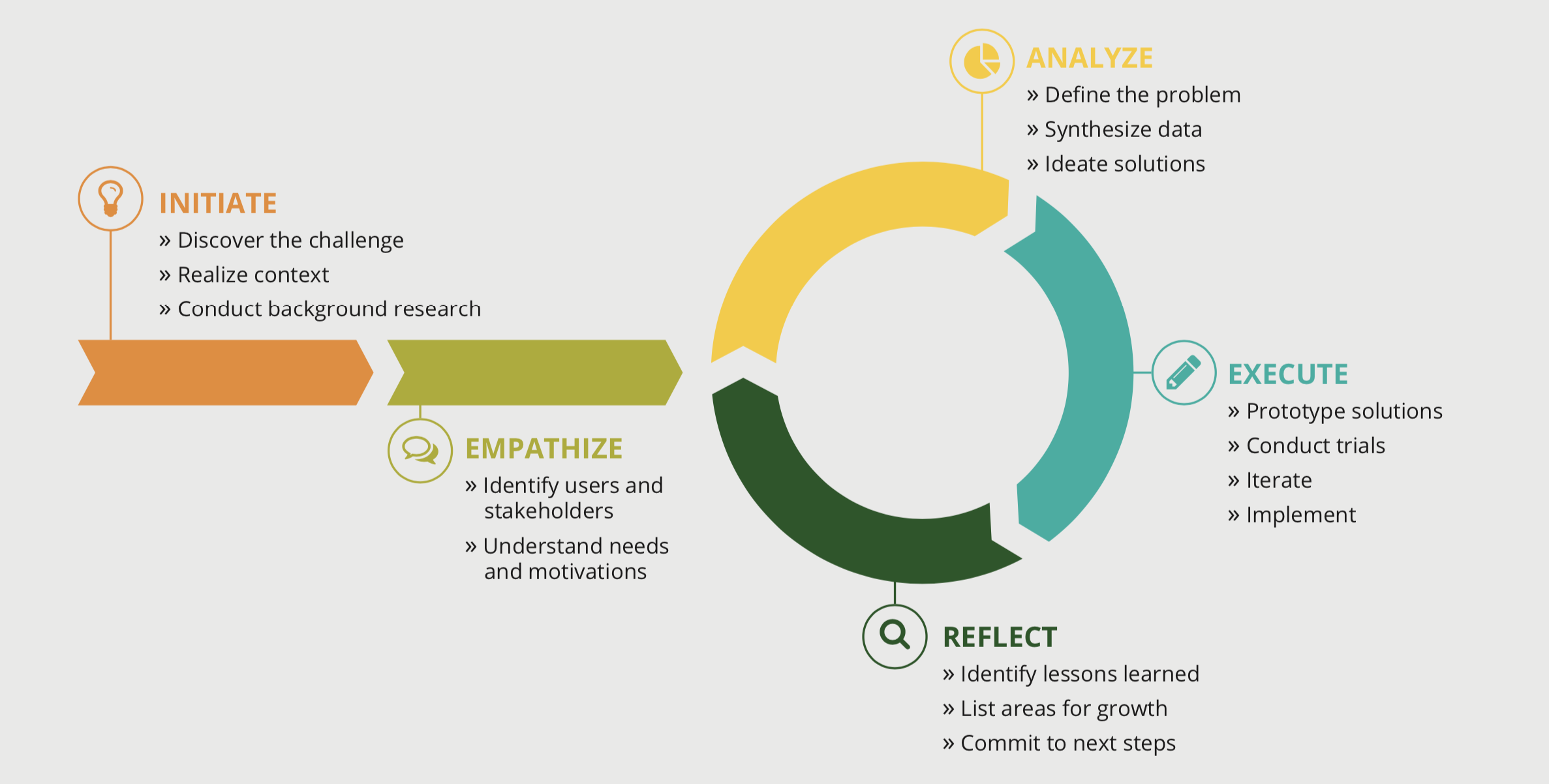Students take learning into their own hands
How do you feed an estimated 10 billion people by 2050? Jairo, Christian, El and Isaiah say they have an App for that.
Reducing the amount of food that is wasted is one way to help ensure more food is available to people around the world, the four students concluded. To solve the food-waste problem, they built Garbo-Man, an App that can detect whether food is good to eat, should be trashed or recycled.
Every 8 weeks, Purdue Polytechnic High School students are presented a real-world challenge, team up with fellow classmates and work together to develop a solution. Corteva Agriscience created the challenge that resulted in Garbo-Man, asking students this question: How might we create new and better food sources to feed the nine billion people by 2050?
Through project challenges, students learn teamwork, problem-solving, critical thinking, communication and leadership skills, and use a blend of practical STEM applications and traditional liberal arts. It makes for a well-rounded educational experience that teaches students everything they need to know to succeed in school, college and the workforce.
Students solve their challenges through the 5-step PPHS Design Process. For Jairo, Christian, El and Isaiah the process looked like this:

- Initiate. The students conducted background research to understand the environment and opportunities that surround their challenge. From the initial research they discovered that billions of tons of food are wasted every year.
- Empathize. Students identified and interviewed stakeholders and potential customers to understand their needs and why they waste food. Many of the individuals they interviewed said they often put too much food on their plates and waste food.
- Analyze. Students brainstormed ideas and solutions. Some of their initial ideas included a pick-up service for unwanted food, a robotic trash can and an App.
- Execute. Students developed prototypes and conducted tests to finalize the functionality of their solution. They worked hard to implement machine-learning into the App so that the App worked seamlessly to identify items, either as trash or food that can be eaten.
- Reflect. Each project ends with an evaluation process where students identify what they could have done better and how to take their project to the next level. The students identified opportunities to scale their project for use in restaurants.
Garbo-Man was such a success that it was one of several projects presented to a panel of experts at Corteva.
Project challenges at Purdue Polytechnic High School are designed by staff in partnership with industry partners. The projects reflect real-world challenges that Indiana companies face in the areas of healthcare, energy, transportation and philanthropy.
